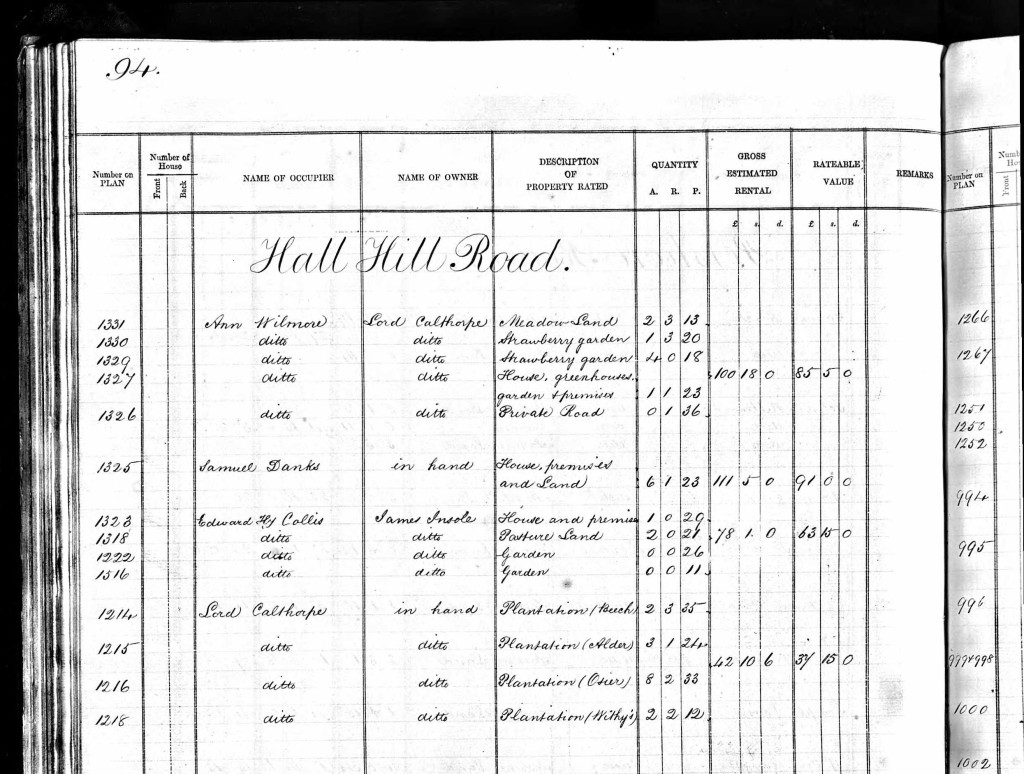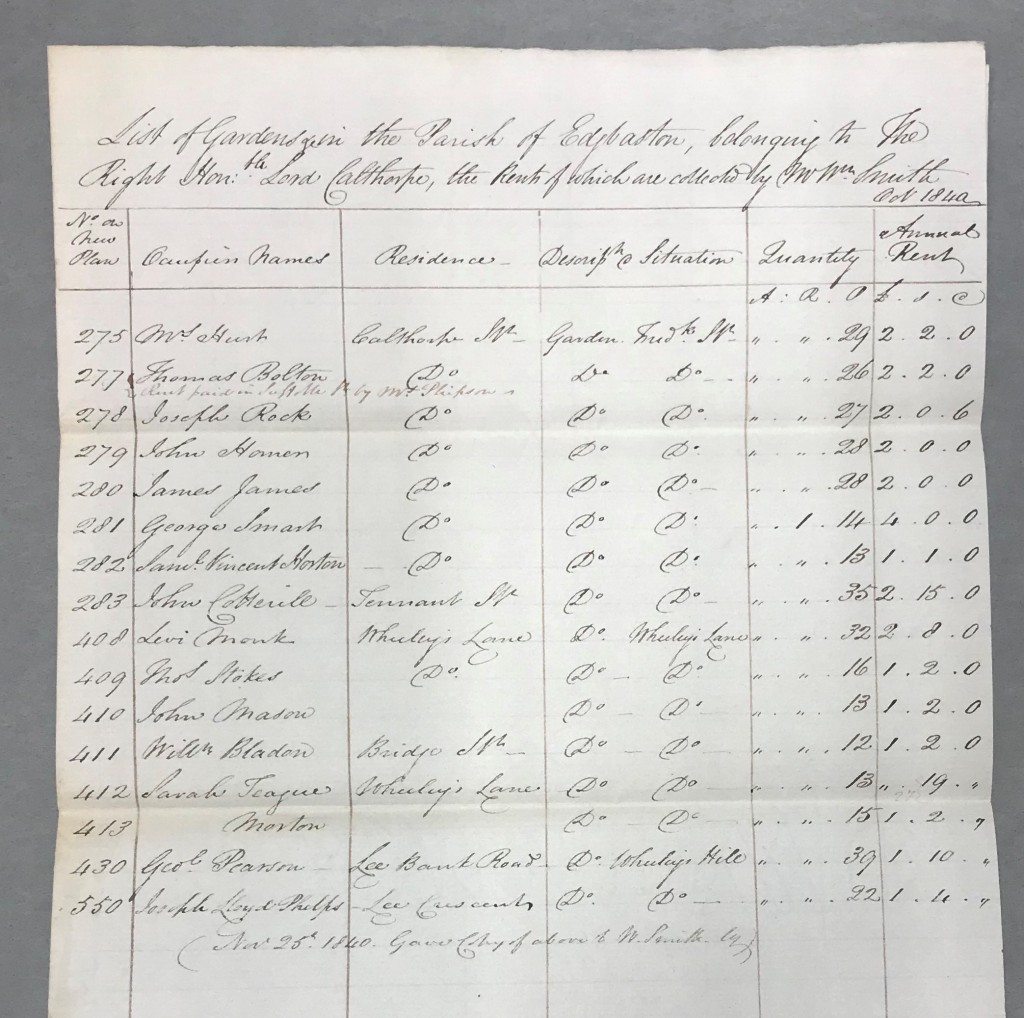There is much to be said about the benefits of the great outdoors on our physical and mental wellbeing. In honour of National Allotments Week which is the 9th to the 15th of August this year, I went digging around in our Allotments Source Guide to see if I could unearth some inspiration for this week’s blog.
What I found were a number of references to documents in the Calthorpe Edgbaston Estate Office Archive, which we usually just refer to as Calthorpe, or MS 2126. (The mere mention of the catalogue often makes us wilt as it’s very complex!) These are the papers of the Gough, later Gough-Calthorpe, family. The family originally purchased land in Edgbaston in 1717, and by 1827 ‘owned 85% of the total acreage of the parish’. This gave them significant authority within the parish to shape the growth of urban housing development and gardens in Edgbaston.
In the collection is a series of lease books – bound volumes of copy leases with plans included. The leases stipulated the use of the land, in many cases that ‘one and only one good + substantial dwelling house be built’ within a year of the date of the agreement. Each page is a different lease and they are accompanied by a plan to show the location of the plot.
Throughout the collection, there are numerous references to gardens, which we would recognise as allotments today. For 19th century England, these gardens provided an escape in the built up industrialised areas of inner cities, for those wishing to enjoy the benefits of the outdoors. The above plan was of interest as it showed the particular plot of land let to Joseph Allen Taylor was adjacent to Hare’s Park Gardens, which was land owned by the Calthorpe’s and rented out for tenants to use as their own gardens. The collection is quite extensive and although I’ve not been able to find any individual lease agreements for tenants of Hare’s Park Gardens, there does survive records of who the tenants were.

The above is a list of rentals of Hare’s Park Gardens from Lady Day 1845. Not only does it give the size of each plot of land, it also gives the names, residence and occupation of the tenants, which are reasonably varied, suggesting tenants of the gardens came from all backgrounds. It is also interesting to see one of the tenants was W. George Wright, a jeweller whose residence was on the Wellington Road. We can see from the image of the plan above that Hare’s Park Gardens was situated on Wellington Road, and although it’s exact location has so far proved elusive in my limited research, he wouldn’t have had far to go. (If any of our readers know where the gardens were, please do let us know!)
Similar details are recorded in the Estate Management records, in a volume simply titled “Lord Calthorpe’s Gardens”.

All that’s missing is a list of what they were growing. Although a search of the Birmingham Rate Books (online through Ancestry) does indicate what Lord Calthorpe was growing on his land in Hall Hill Road which includes beech and alder.

The Estate Boxes contain a wealth of correspondence and include gems like the rentals above, and documents such as this list of gardens in Edgbaston for 1840.

Navigating the catalogue can be tricky. The paper copy available in the Wolfson Centre spans several rather large lever arch files. If you are looking for information on a particular property that was once part of the Calthorpe Estate, the indexes to properties and lessees are the best place to go as this will direct you to the relevant part of the catalogue. From my search for Hare’s Park Gardens, references to land or properties may be found across more than one series. The collection was re-catalogued a number of years ago to reflect the complex administration of the estate. While the modern structure may look intimidating to use, the records themselves are physically arranged in order of their finding number, which is far more simple, being series of Estate Boxes (EB), Volumes (Vols) and Old Plan Series (OPS). What makes it even easier to access, is that the catalogue for MS 2126 can be searched online. For help searching the catalogue, you can look at our blog on using the online catalogue. If you spot anything that plants a seed of a research interest, you can then make an appointment using our online booking system. Please quote the finding number, though, it’s much easier!!
Nicola Crews, Archivist

